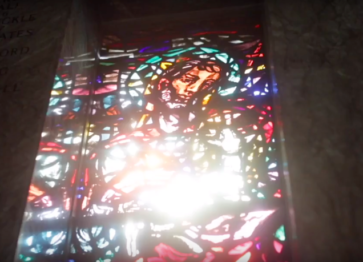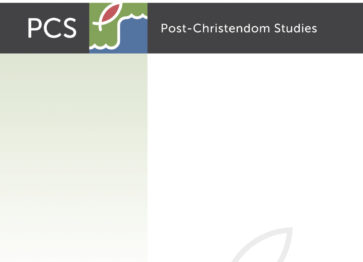The Nordic countries, such as Finland, adopted Christianity at the beginning of the second millennium, and the Christian faith—especially in the form of Lutheranism—has long been a cohesive force within the Scandinavian societies. However, as in many countries of the Global North, the younger generations disagree and doubt the Christian faith of their fathers. Moreover, the spiritual attention of the Nordic people is now turned elsewhere, as some in Iceland, where old Norse religion is counted as the fastest-growing religion.[1] The ancient indigenous gods that were thought to be buried a long time ago, have returned.
Christianity entered Finland from two directions: from the west and east, Sweden and Russia. During the Viking Age (750-1050), people were drawn to Christianity peacefully through interactions with Vikings and other traders, but unlike elsewhere in Scandinavia and Europe, Vikings were more interested in trading than raiding.[2] The Christian faith advanced slowly, and the new faith was mixed with ancient beliefs. However, during the time of medieval missionary endeavors tensions increased around the Baltic Sea as the surrounding nations, such as Novgorod and Sweden, competed for control over the trade routes and religious power. As a result of the peace treaty in 1323, the western part of Finland was brought under the rule of the Swedish kingdom and the Catholic church; eastern Finland was ruled by Novgorod and the East Orthodox church.[3]
Today, Finland’s spiritual landscape is a mixture of old and new. The Lutheran church has still an important role in the civic life and traditions of the nation,[4] and many other Christian denominations[5] do their share in God’s mission. At the same time, religious diversity and the number of new religions and religious movements are on the rise.[6] Although many Finns consider themselves non-religious, exploring new spiritual pathways–such as yoga, meditation, angels, or even communicating with pets–has become trendy. Whereas in the past, the doctrines of the church directed the worldview for many, now people follow their own preferences and choose elements from various belief systems.[7] Moreover, new demands for equality and individual rights are challenging the traditional authorities with a new magnitude. For instance, in the spring of 2022, the court case of Päivi Räsänen, a Finnish MP, gained international attention over her views of homosexuality and the freedom of speech provoking a question of “whether citing the Bible can be considered a crime against concerns over basic rights and protection of minorities.”[8] So, in the past Räsänen’s position would have been widely held, even taken for granted. Today, given post-Christendom, her view is not only controversial but perhaps even illegal.
Christianization of Finland was initiated by the state and served the interests of the political and religious authorities of the time. Again, in modern-day Finland, the authorities of the country follow the trends of religious freedom and pluralism. “Siniristilippu,” the Finnish flag with a blue cross is thought to symbolize not just the colors that are present in Finnish nature (e.g. snow and lake waters) but also the Christian faith adopted by the previous generations and governments in the past. Today, the flag with the cross may seem a mere religious artifact for some, while at the same time, there are certainly still Finns who value the cross as it delivers a message of hope and victory: it is the anchor in today’s troubled world.[9] [10]
[1] K. V. Turley, “Playing with Fire: The Rise of the Neo-pagans.” In National Catholic Register, October 31, 2018. Online https://www.ncregister.com/news/playing-with-fire-the-rise-of-the-neo-pagans.
[2] Joonas Ahola & Frog, “Approaching the Viking Age in Finland”, in The Viking Age in Finland, edited by Joonas Ahola & Frog with Clive Tolley. Helsinki: SKS, 2014, 44.
[3] Markku Heikkila and Simo Heininen, (trans. John Jamieson) A History of the Finnish Church. Riga, Latvia: SKS, 2016, 14 and 106–107.
[4] As the result of reformation, the Evangelical Lutheran Church of Finland was a state church until 1870. The state of Finland and the ELCF work still together, for instance, “The Church plays an official role in the undertaking of social tasks such as keeping public records. In turn, the state is responsible for providing comprehensive religious education.” More information of the ELCF available in https://evl.fi/our-work/church-and-state.
[5] The largest Christian denominations in Finland are the ELCF, The Greek Orthodox Church, Roman Catholic, Free Churches, and Pentecostal Church. “Population by Religious Community 2000–2015,” Statistics Finland https://www.stat.fi/til/vaerak/2015/01/vaerak_2015_01_2016-09-23_tau_006_en.html.
[6] “Religiosity of Finns in Transition,” Summary of Publication, The Church Research Institute 65: Religion in Daily Life and Celebration. The Evangelical Lutheran Church of Finland, 2016–2019. https://evl.fi/documents/1327140/80176671/Tiivistelma%CC%88_tutkimusjulkaisu_en-GB_final.pdf/4cb4bc3e-a792-4d5e-b939-246a91b62a96?t=1640847843286.
[7] Riina Kasurinen, “The Growth of Spirituality Has Brought with It Animal Communication.” In Yle Uutiset, March 20, 2022. Yle, Yleisradio Oy, Finland’s national public Broadcasting company https://yle.fi/a/3-12346473.
[8] “Finnish court clears lawmaker of charges over homosexuality comments,” Reuters, Europe. April 1, 2022. Online https://www.reuters.com/world/europe/finnish-court-clears-lawmaker-charges-over-homosexuality-comments-2022-03-30/. A more thorough review of the case from the evangelical perspective: Joel Forster, “Päivi Räsänen on Trial: Theologians Disagree on Her Biblical Views.” In Evangelical Focus, Europe. January 21, 2022. Online https://evangelicalfocus.com/europe/15139/paivi-rasanen-timo-eskola-niko-huttunen.
[9] A Lutheran parish in Kuopio, Finland has produced music videos for traditional hymns, for example, “Silmäni aukaise, Jumalani” (known in English as ‘Be Thou My Vision’), Online https://www.youtube.com/watch?v=03WyrSa6Vzo.
[10] The Source of the Front Image: Finnish Heritage Agency, Arkeologian esinekokoelma, resource ID 740658. The Cross Pendant originates from the Viking Age (1050–1150).




